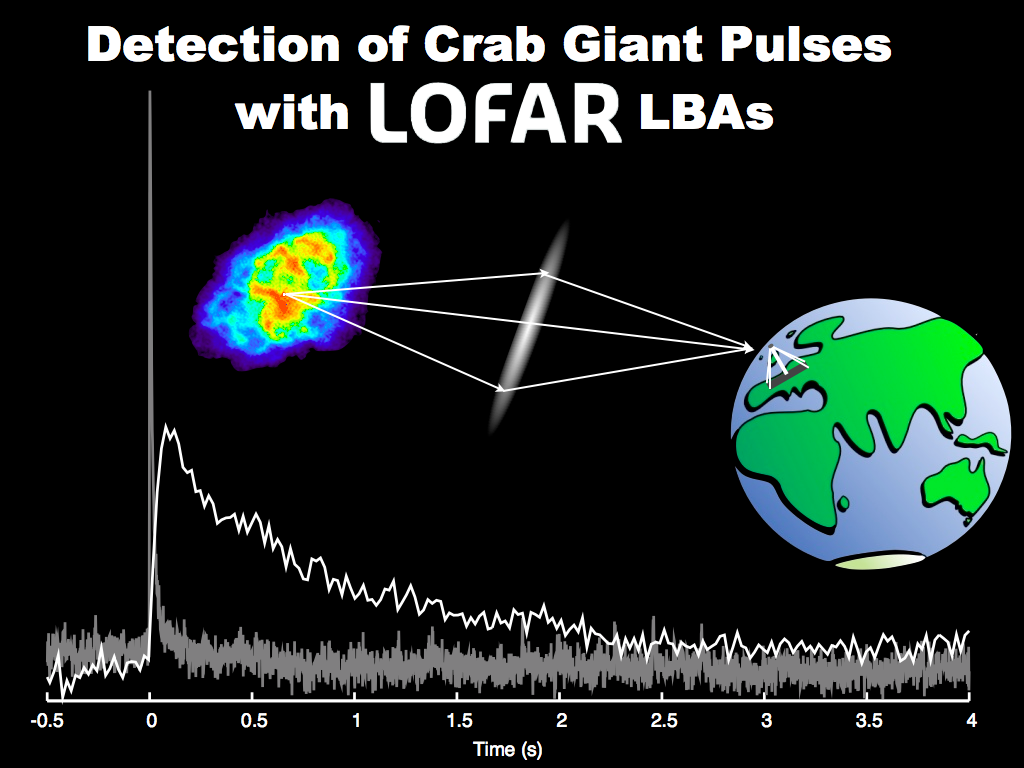Daily Image
13-12-2010

First detection of the Crab Pulsar in LOFAR Low Band
| Submitter: | Tom Hassall & LOFAR PWG |
| Description: | This plot shows the first Crab Giant Pulse (GP) detected by the LOFAR LBAs. GPs have previously been detected in the HBAs (see AJPOD from 07-05-2009) but interstellar scattering makes GPs much harder to detect in the Low Band. As light travels through the interstellar medium (ISM) it can sometimes interact with particles in its way. The particles scatter the light in random directions causing its path to change slightly. The more the light is scattered the longer its geometric path to Earth becomes, so the result of scattering is to broaden the pulse. Charged particles are more likely to interact with light at with long wavelengths so the effect of scattering is strongly dependent on frequency. This is illustrated by comparing the width of a GP in the HBAs (~150 MHz - grey line) to the width of a similar pulse in the LBAs (~50MHz - white line). The GP in the low band is over 50 times wider than the HBA counterpart!
|
| Copyright: | Hassall/Lofar Pulsar Working Group |
| |
|
| |
|  |
Please feel free to submit an image using the
Submit page.

